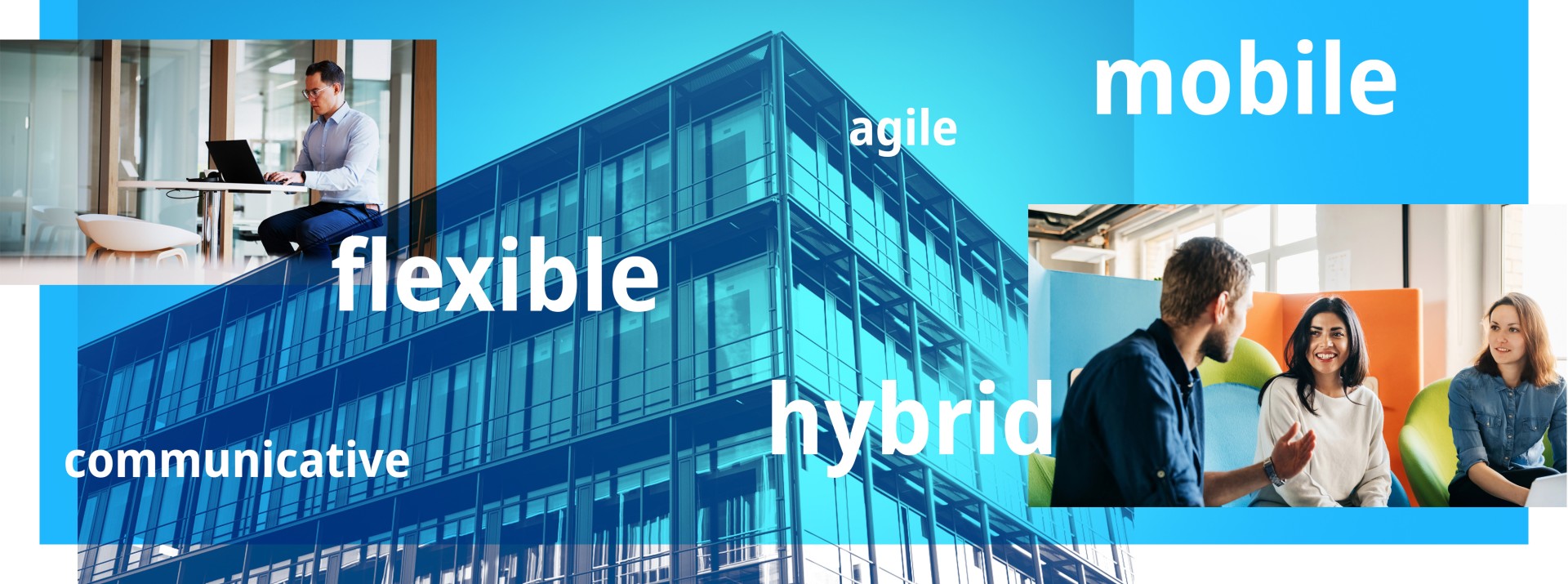
Digitalization, globalization, a shortage of skilled workers and (of course) the coronavirus pandemic have permanently changed our working environments. The New Work concept is the ultimate embodiment of this transformation. For businesses, developing a new mindset, implementing state-of-the-art working models, and changing corporate culture all pose major challenges. Knorr-Bremse is very much involved in this transformative process. Flextime models, desk sharing and working from home (WFH) are just a few of the New Work solutions adopted by the Munich-based Group.
“At the moment, ‘New Work’ is what everyone’s talking about,” says Klaus Remmler, Senior Vice President Corporate Human Resources at Knorr-Bremse. “For us, however, it’s important not to just blindly do something because that’s what everyone else is doing, but to do something because it’s a good fit with Knorr-Bremse and our corporate culture.” As it happens, the Munich-based Group took its first steps toward a new, more flexible working environment some years before the pandemic. “We were already thinking about it back in 2018, and in April 2019, we drew up a work agreement that enabled staff at our Munich office to work from home,” explains Remmler. Even before the coronavirus outbreak, the work agreement allowed employees to spend as much as 40 percent of their working week out of the office. “At the time, however, people didn’t make much use of it,” recalls the Head of Corporate HR. Covid changed all that – offices swiftly emptied, and many Knorr-Bremse employees started working on their laptops in the comfort of their own homes. “In 2020, with no advance warning, the pandemic effectively hurled us into a new working culture,” says Remmler. But as time passed, he adds, it became clear that working from home (WFH) also had many advantages – further enhancing efficiency, for example. “This discovery prompted us to develop a whole new working model, basically switching over to a mix of remote work and desk sharing.”
Booking desk space online
“For the time being, we’ve actually extended our work agreement: Many employees can currently spend between 60 and 80 percent of their time working from home,” continues Remmler. But this isn’t the only innovation. Knorr-Bremse has remodeled the building complex on the Group’s Munich campus and introduced the concept of desk sharing. “Employees no longer have fixed desks – now they can book their workspaces online, in advance,” he explains. “They can usually choose who they want to sit next to, which means they can regularly talk to different colleagues.” At the end of the working day, employees lock up all their belongings in their personal lockers, leaving a tidy workplace behind them.
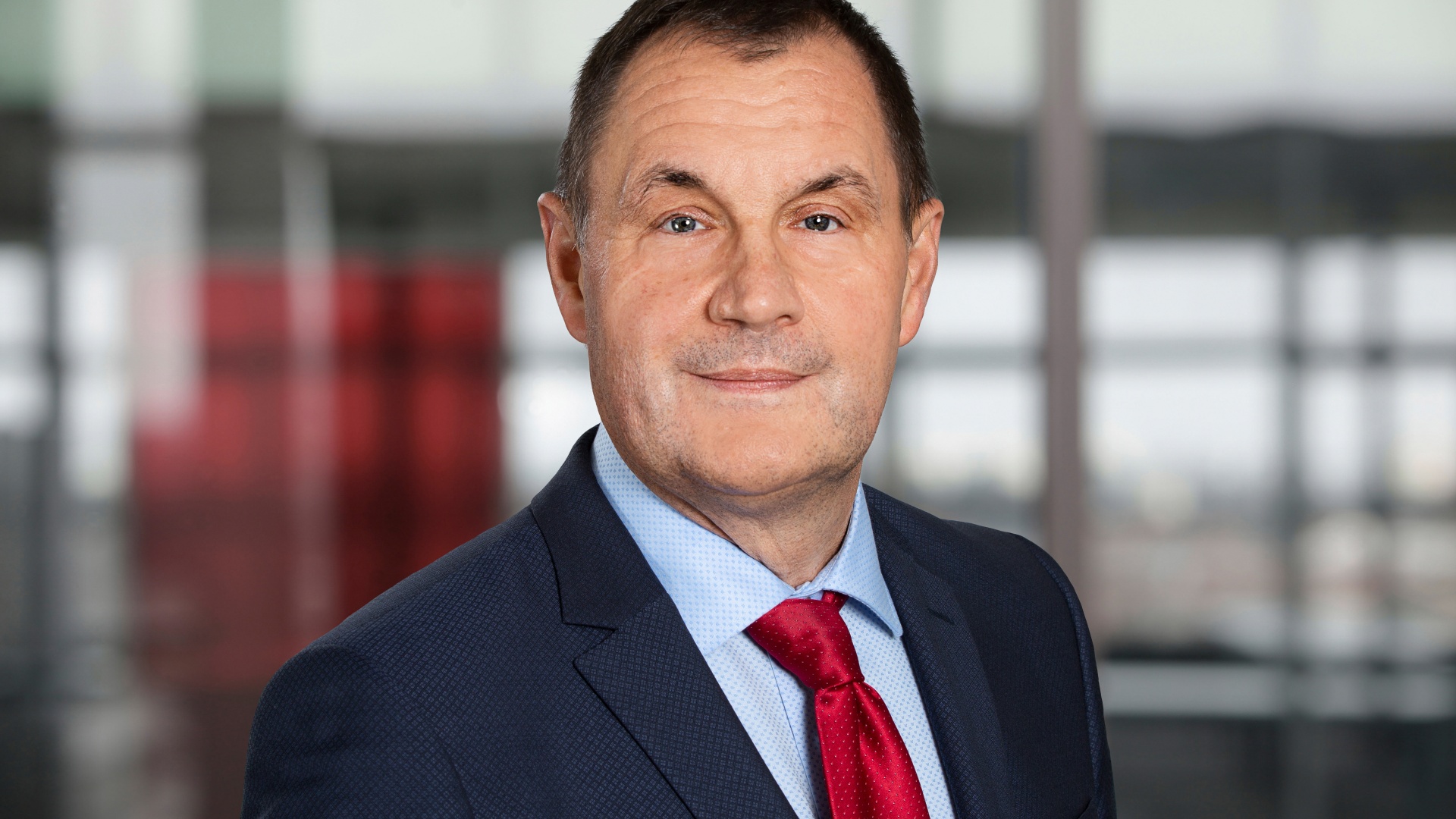
But why take all this trouble? “Remote work is very much part of the modern working environment – it’s as simple as that. We only have limited space available, especially in metropolitan areas like Munich, so we want to avoid empty desks wherever possible. The desk sharing approach essentially gives us more room, because we can manage very well on our existing premises.” He adds that employees were quick to take advantage of the new approach: “Most of them quickly got used to it and appreciate the newfound flexibility – no longer having to travel to work if they only have digital meetings on a particular day, for example, or being able to sit next to different colleagues if they so wish.”
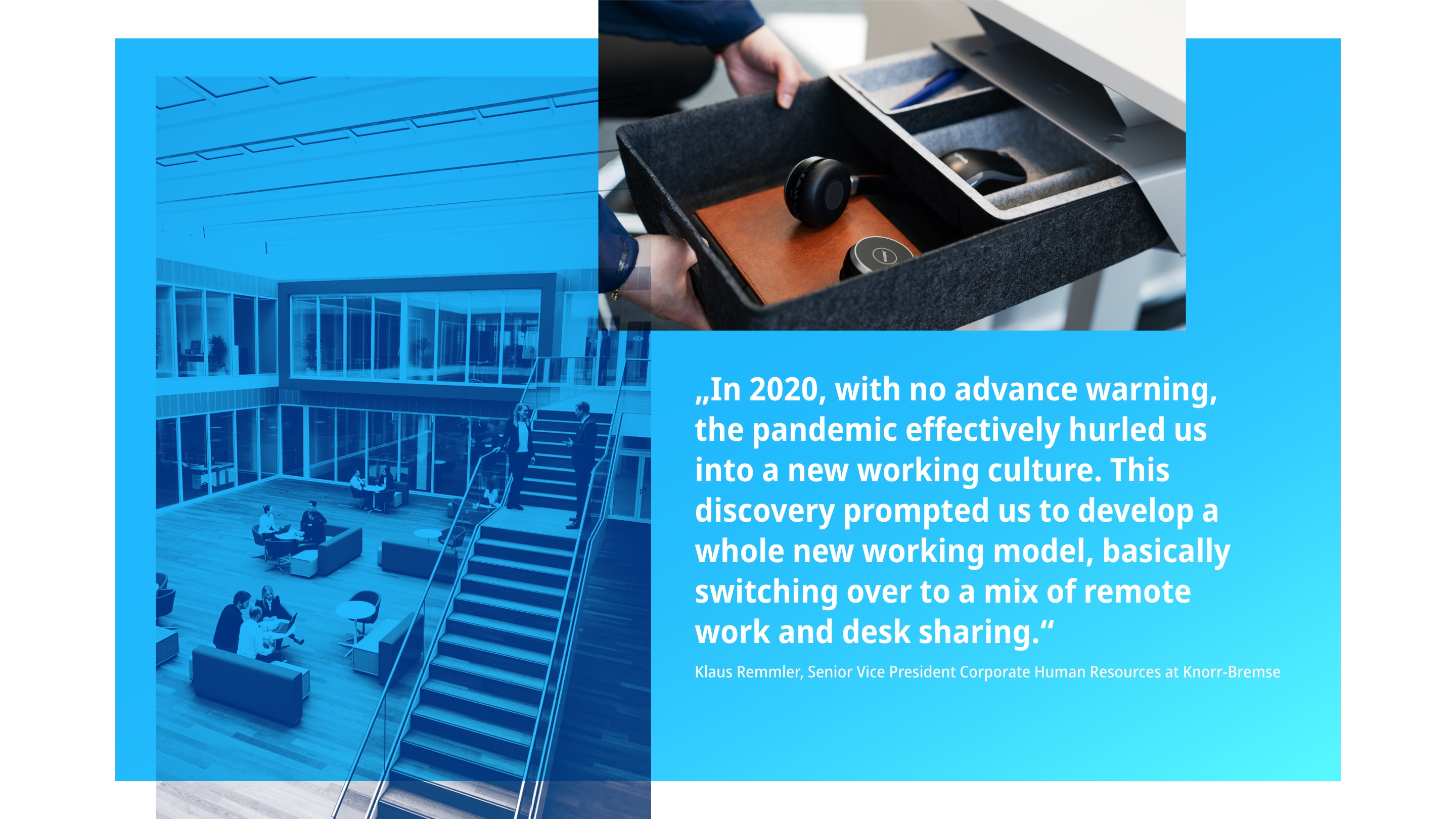
Patricia Contro, Marketing Officer in the Rail Vehicle Systems division, is a fan of the new concept. For her, New Work means that the office has become a space for sharing ideas and communicating. This provides a heightened sense of togetherness that extends beyond her own team. “For me, it’s important to have the flexibility to choose where I work, so each day I can decide where I’ll be most productive. And hybrid working models give me this kind of flexibility,” she believes. Contro’s colleague Korbinian Rudzki, who works in the Rail Vehicle Systems division as a Business Development Officer, agrees with her, adding: “What we’re being offered is an innovative, state-of-the-art workplace that encourages agility and collaboration while optimizing our productivity, motivation and communication.” As he sees it, a company like Knorr-Bremse depends on innovation in both products and processes. Rudzki is delighted that employees can now choose the ideal workplace for every possible working situation.
While team members have been quick to adopt new habits, some managers have found it less easy to adjust to the new reality, concedes Remmler. “The new working model, with its open approach and multiple collaborative working methods and tools, is also starting to transform our corporate culture. We felt it was important to be clear that the old days aren’t coming back – that we’re all evolving away from traditional project structures and becoming more agile.” The process is under continuous development, he explains, which is why the Group organizes dedicated seminars to support all employees. “In our seminars you learn, for example, how to implement agile structures and use new working methods, or the best ways to work together as a hybrid team.” Despite digitalization and remote work, personal interaction is as important as ever. As Remmler says: “Our aim is to combine the best of both worlds.”
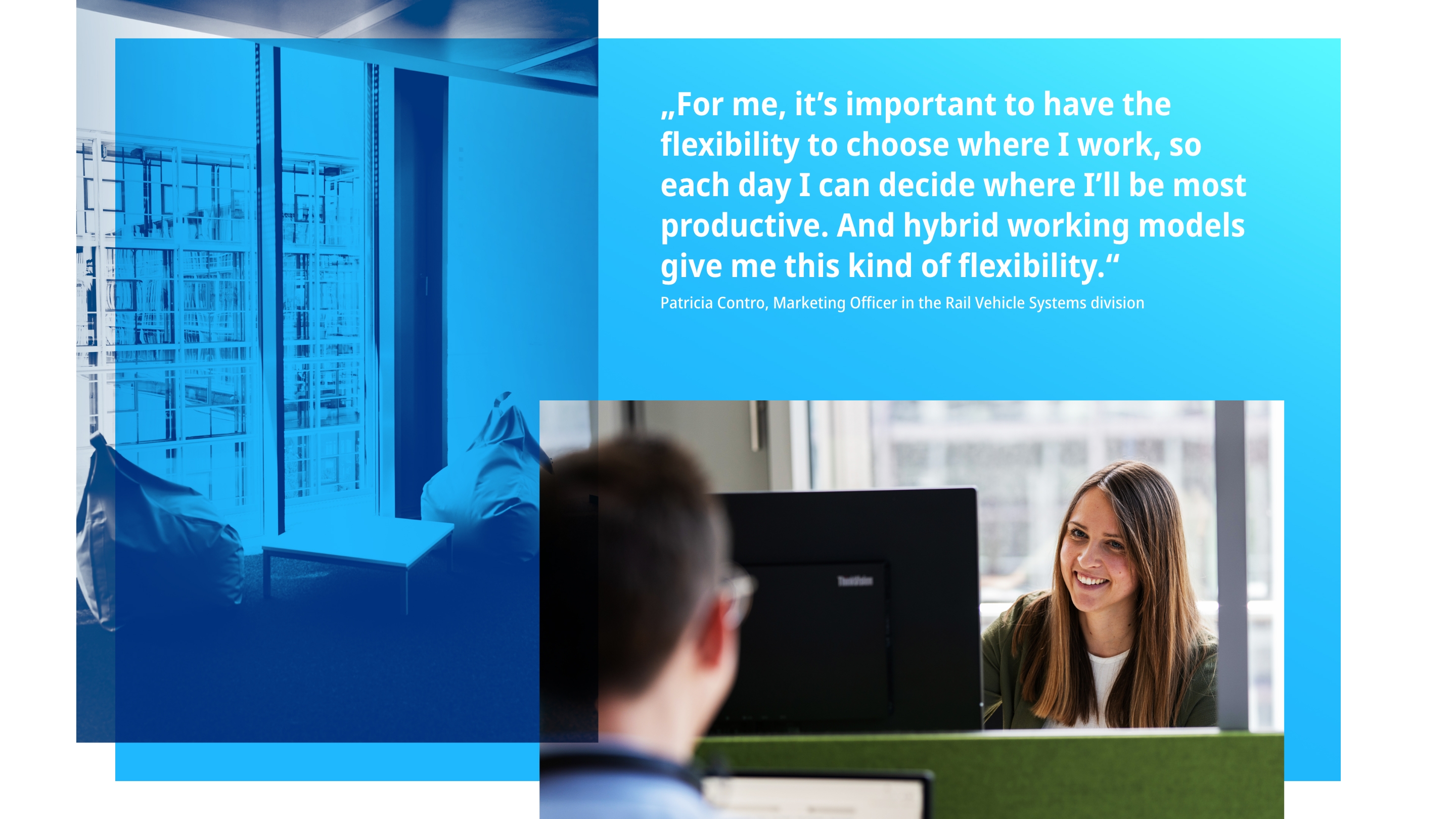
Professional development – learning “your way”
Speaking of learning: Personnel development also plays an integral part in Knorr-Bremse’s New Work model. “In early 2021, for example, we introduced LinkedIn Learning for all our employees worldwide.” The entire workforce can now book and take online courses wherever and whenever they want. “A lot of people took advantage of the pandemic to do further training,” smiles Remmler. “What’s more, we’re working to extend the career opportunities we already offer by adding new, agile career paths for experts who want to pursue a specialist or project management career without taking on a traditional management role as well.”
The HR function is also blazing new trails. Around the world, many HR processes have been gradually digitized and standardized. Now, thanks to a new IT system dedicated to HR, all HR-related activities and services have been brought together on a single, user-friendly digital platform.
The conversion of the complex of buildings on Knorr-Bremse’s Munich campus has also played an important role in this new working environment. “We put up new buildings and modernized our existing premises,” explains the Head of Corporate HR. In many areas, he continues, the architecture has been adapted to fit the New Work model and now consists of open-plan offices, cubicles where people can work undisturbed, conferencing islands, beanbags, and meeting facilities indoors and out. “The whole thing is tied together by a brand-new, state-of-the-art staff canteen that extends over two levels – cafeteria downstairs, restaurant upstairs,” adds Remmler.
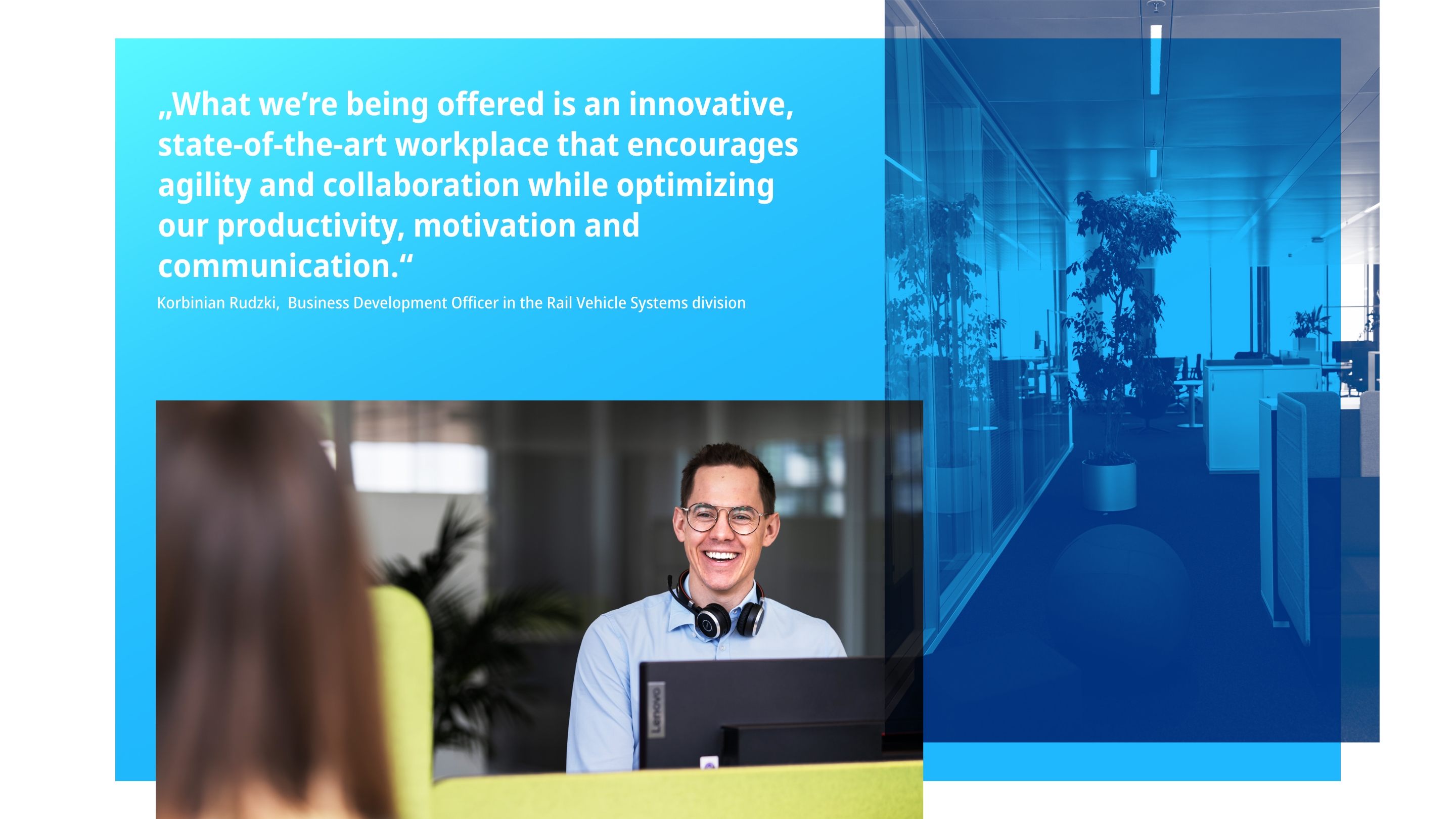
However, it is important not to forget that around one third of Knorr-Bremse’s total global workforce is employed in production, where WFH is simply unfeasible. “We want to offer these colleagues similar benefits,” continues Remmler, “so we’re modernizing our plants around the world and embedding new, flexible working processes in production that rely on high-tech, digital solutions. We’re also prioritizing well-equipped spaces for socializing and eating, and we offer a wide variety of health and social benefits, depending on location,” he adds.
The Knorr-Bremse site in Munich isn’t alone in switching over to the new working model: “Our sites are networked worldwide, so of course we’ve implemented our New Work model on all Knorr-Bremse sites – in various formats and with different points of emphasis in each case,” says Remmler.
In his view, it is essential that employees should enjoy working for Knorr-Bremse and feel relaxed and welcome on corporate premises. He admits that he’s very happy with developments to date: “In the worldwide competition for highly sought-after specialists, we’re definitely ahead of the game. We’re taking an active approach to self-transformation and offer a future-focused working environment with many attractive benefits. Even so, we’re constantly working to further develop our organization, to ensure we stay on the ball and continue to meet the needs of our customers and employees.”
New Work worldwide
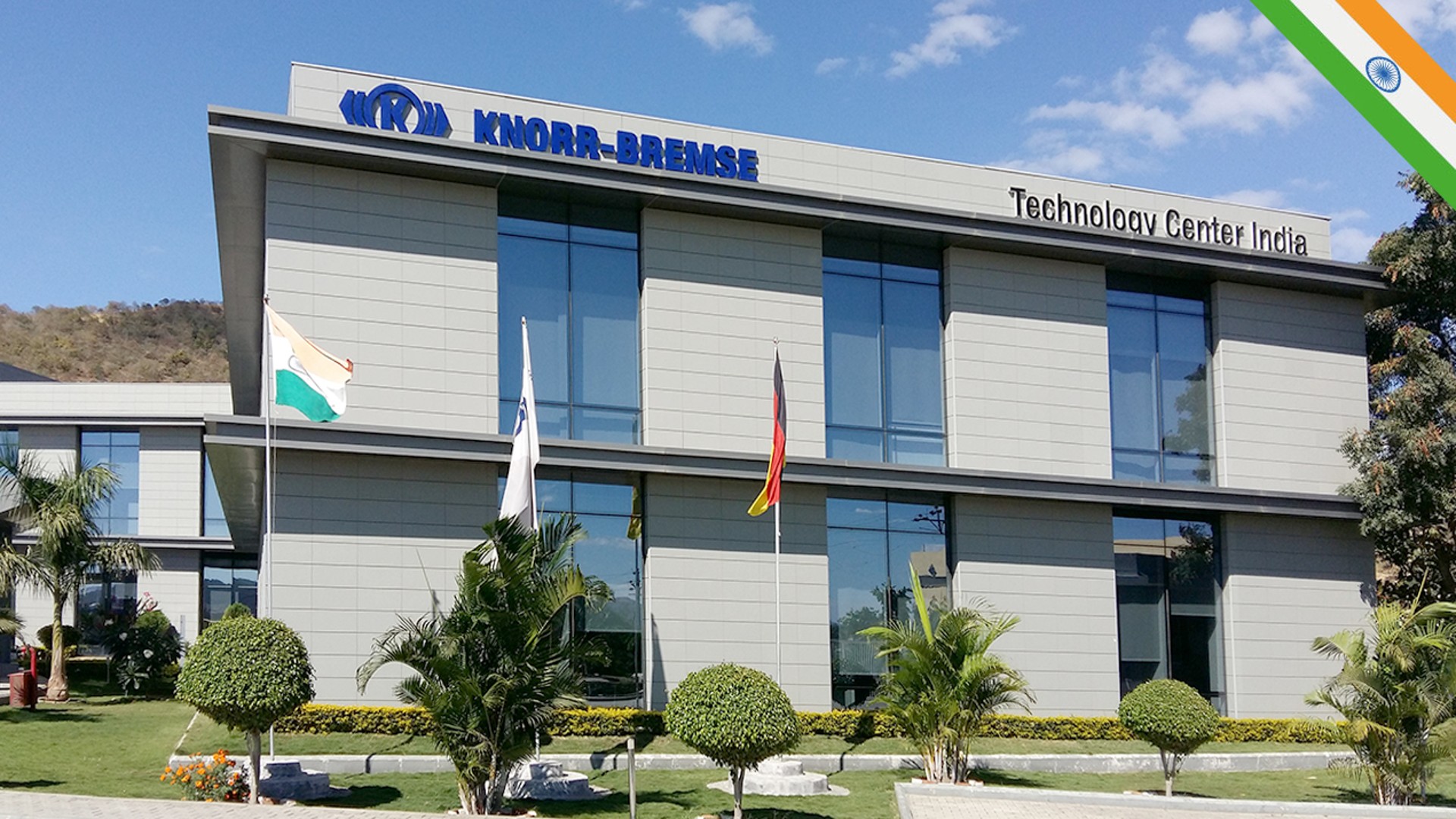
Knorr-Bremse Technology Center India in Pune
The working culture at the Knorr-Bremse Technology Center India (TCI) in Pune has also changed: Today’s workplace is a flexible, hybrid, adaptable space. For TCI employees, “New Work” means working with greater freedom, flexibility and self-determination than ever before. Among other things, Knorr-Bremse’s Indian subsidiary has developed new, hybrid working models, made working hours more flexible, and modernized its office space. Thanks to an internal feedback initiative, TCI found that most employees prefer a hybrid working model and appreciate the resulting autonomy. The ensuing work-life balance and support from line managers are also very popular with the workforce. Employee satisfaction has top priority. Knorr-Bremse TCI systematically addresses employees’ personal and professional goals and needs: Everyone is involved in decision-making processes, where they are free to share their ideas and suggestions. Their respective career aspirations are supported by selective offers, giving employees plenty of opportunities to develop and grow under the Knorr-Bremse umbrella.
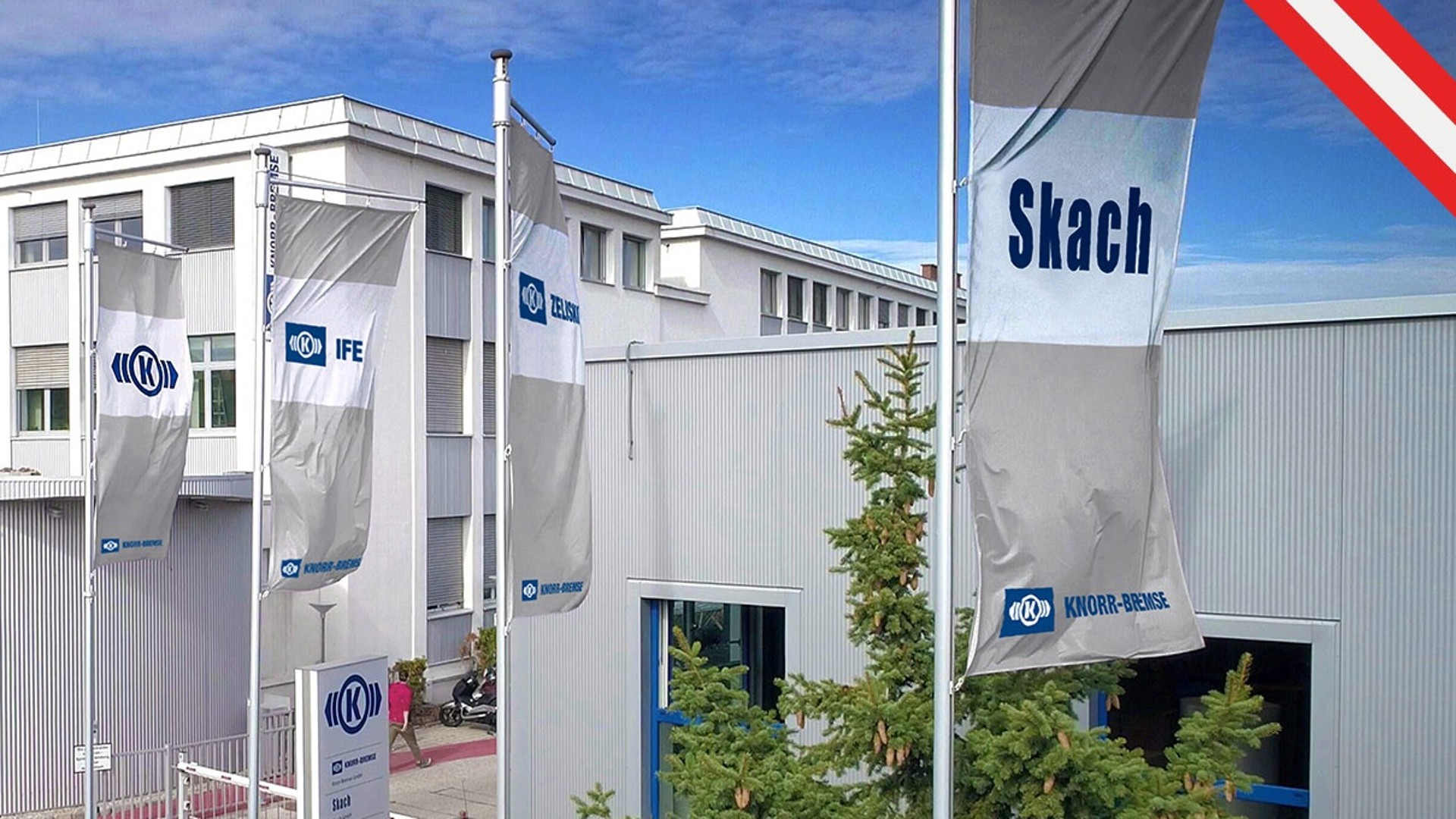
Knorr-Bremse Austria in Mödling
The entire concept of “work” is also being reinvented on the Knorr-Bremse site in Mödling, Austria. Office space has been redesigned – flexible working models, remote work and desk sharing are all part of the new normal. Numerous soundproofed meeting islands plus a wealth of spontaneously accessible conference rooms provide space for privacy in the otherwise open-plan office, as well as a platform for networked or agile working practices. Open spaces and flexibility improve job satisfaction and stimulate creativity, ultimately encouraging blue-sky thinking and innovation.